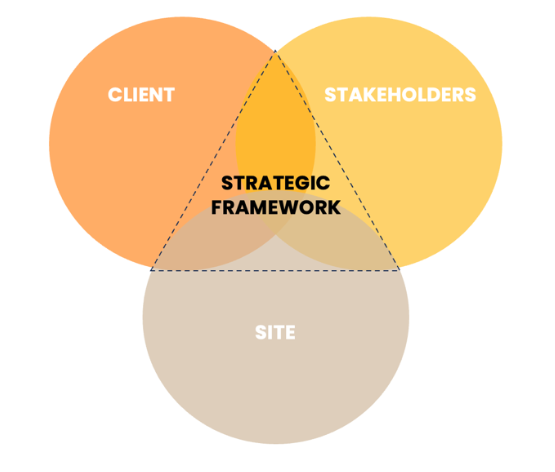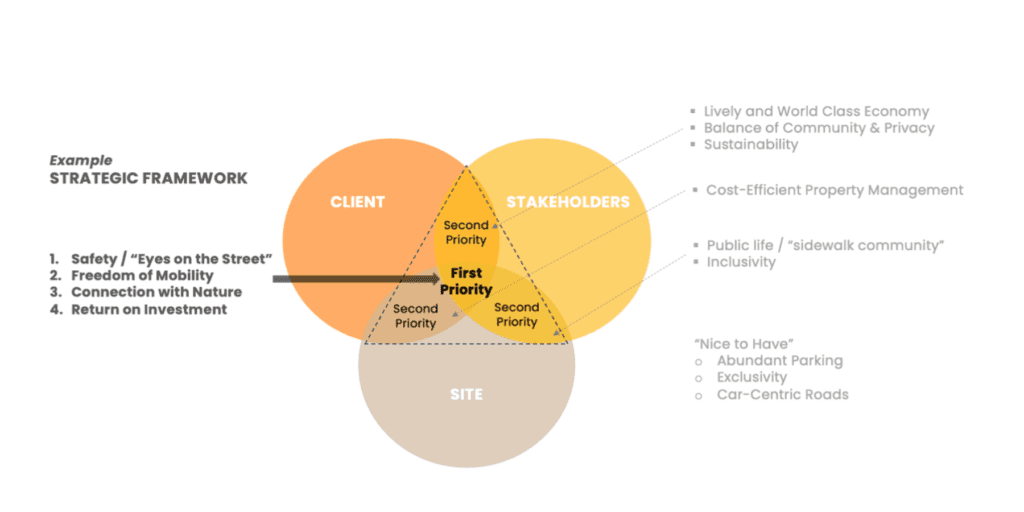
Master Planning new townships and cities requires learning how the unique character of each landscape can shape inclusive, diverse and sustainable connections between people and nature. Bringing your vision to life in the short, medium and long term, requires determining in each phase a mix of uses that give each other constant mutual support, both economically and socially.¹ This helps you outline the timeline for building projects, breakdown budget requirements, and secure funding.²
In our experience with economic zones, housing projects, and natural reserves, successful Master Plans occur when you clearly define your goals and include a wide range of individuals in the process.³ Developing a Strategic Framework helps set the scene for Master Planning. This involves conducting visioning workshops and needs assessments that are as inclusive as possible to clarify your goals, create buy-in, and identify risks for management or conversion into opportunities.
¹ Jane Jacobs, The Life and Death of American Cities (1961).
² Neumann Monson Architects, An Overview of the Master Planning Process, 14 February 2022.
³ See Neumann Monson Architects, An Overview of the Master Planning Process, 14 February 2022.
Sample Data Gathering Checklist for Developing a Strategic Framework
CLIENTS
SITE
STAKEHOLDERS
- Long-term business or comprehensive plans
- Funding sources and availability
- Advocacies
- Risks / Concerns
- Environment
- Economy & Transportation
- Right of Way
- Existing structures, if any
- Maintenance costs
- Comprehensive Land Use Plan (RA 11201)
- Risks
- Local Residents and Growth Projections
- Businesses in the area and their employees
- History and Present Local Political Dynamics
- Applicable Laws such as:
- Risks / Concerns
CLIENTS
- Long-term business or comprehensive plans
- Funding sources and availability
- Advocacies
- Risks / Concerns
SITE
- Environment
- Economy & Transportation
- Right of Way
- Existing structures, if any
- Maintenance costs
- Comprehensive Land Use Plan (RA 11201)
- Risks
STAKEHOLDERS
- Local Residents and Growth Projections
- Businesses in the area and their employees
- History and Present Local Political Dynamics
- Applicable Laws such as:
- Risks / Concerns
The Strategic Framework helps you come up with a Master Plan that balances orderly centralized planning while setting the stage for spontaneous organic growth that gives neighborhoods its character. Based on the groundbreaking wisdom of urbanist Jane Jacobs, Master Plans can build world class, vibrant and dynamic cities and towns with something for everybody, “only because and only when they are created by everybody.”
The Authors


Ar. Manuel Castro


Atty. Paolo Salvosa


Engr. Arnel Custodio



